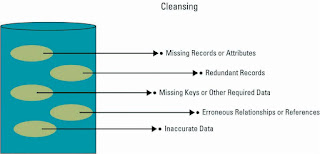A common approach using the professional expertise within an organization to develop and maintain the organization’s information technology systems. Insourcing has been instrumental in creating a viable supply of IT professionals and in creating a better quality workforce combining both technical and business skills.
Outsourcing :
Is an arrangement by which one organization provides a service or services for another organization that chooses not to perform them in-house. In some cases, the entire information technology department is outsourced, including planning, and business analysis as well as the installation, management, and servicing of the network and workstations.
The three different forms of outsourcing options a project must consider are :
- Onshore outsourcing - engaging another company within the same country for sevices.
- Nearshore outsourcing – contracting an outsourcing arrangement with a company in a nearby country. Often this country will share a border with the native country.
- Offshore outsourcing – using organizations from developing countries to write code and develop systems. In offshore outsourcing the country is geographically far away.
The influential drivers afeecting the growth of the outsourcing market include :
- Core competencies – many companies have recently begun to consider outsourcing as a mean to fuel revenue growth rather than just a cost-cutting measure.
- Financial savings – it is typically cheaper to hire workers in China and India than similar workers in the United States. Technology is advancing at such an accelerated rate than companies often lack the resources and etc.
- Rapid growth – a company’s sustainability depends on both speed to market and ability to react quickly to changes in market conditions.
- Industry changes – high levels of organization across industries have increased demand for outsourcing to better focus on core competencies.
- The internet – the pervasive nature of the internet as an effective sales channel has allowed clients to become more comfortable with outsourcing.
- Globalization – as markets open worldwide, competition heats up. Companies may engage outsourcing service providers to delivers to deliver international services.
OUTSOURCING BENEFITS.
§ Increased quality and efficiency of a process, service, or function.
§ Reduced operating expenses.
§ Resources focused on core profit-generating competencies.
§ Reduced exposure to risks involved with large capital investments.
§ Access to outsourcing service provider’s economies of scale.
§ Access to outsourcing services provider’s expertise and best-in class practices.
§ Access to advanced technologies.
§ Increased flexibility with the ability to respond quickly to changing market demands.
§ No costly outlay of capital funds.
§ Reduced head count and associated overhead expense.
§ Reduced frustration and expense related to hiring and retaining employees in an exceptionally tight job market.
§ Reduced time to market for products or services.
OUTSOURCING CHALLENGES
Contract length – most of the outsourced IT contracts are for a relatively long time period (several years). This is because of the high cost of transferring assets and employees as well as maintaining technological investment. The long contract causes three particular issues:
1. Difficulties in getting out of a contract ig the outsourcing service provider turns out to be unsuitable.
2. Problems in foreseeing what the business will need over the next 5 or 10 years (typical contract lengths) hence creating difficulties in establishing an appropriate contract.
3. Problems in reforming an internal IT department after the contract period is finished.
Competitive edge – effective and innovative use of IT can give an organization a competitive edge over its rivals. A competitive business advantage provided by an internal IT department that inderstands the organization and is commited to its goals can be lost in an outsourced arrangement.
Confidentially – in some of organizations, the information stored in the computer system is central



















































